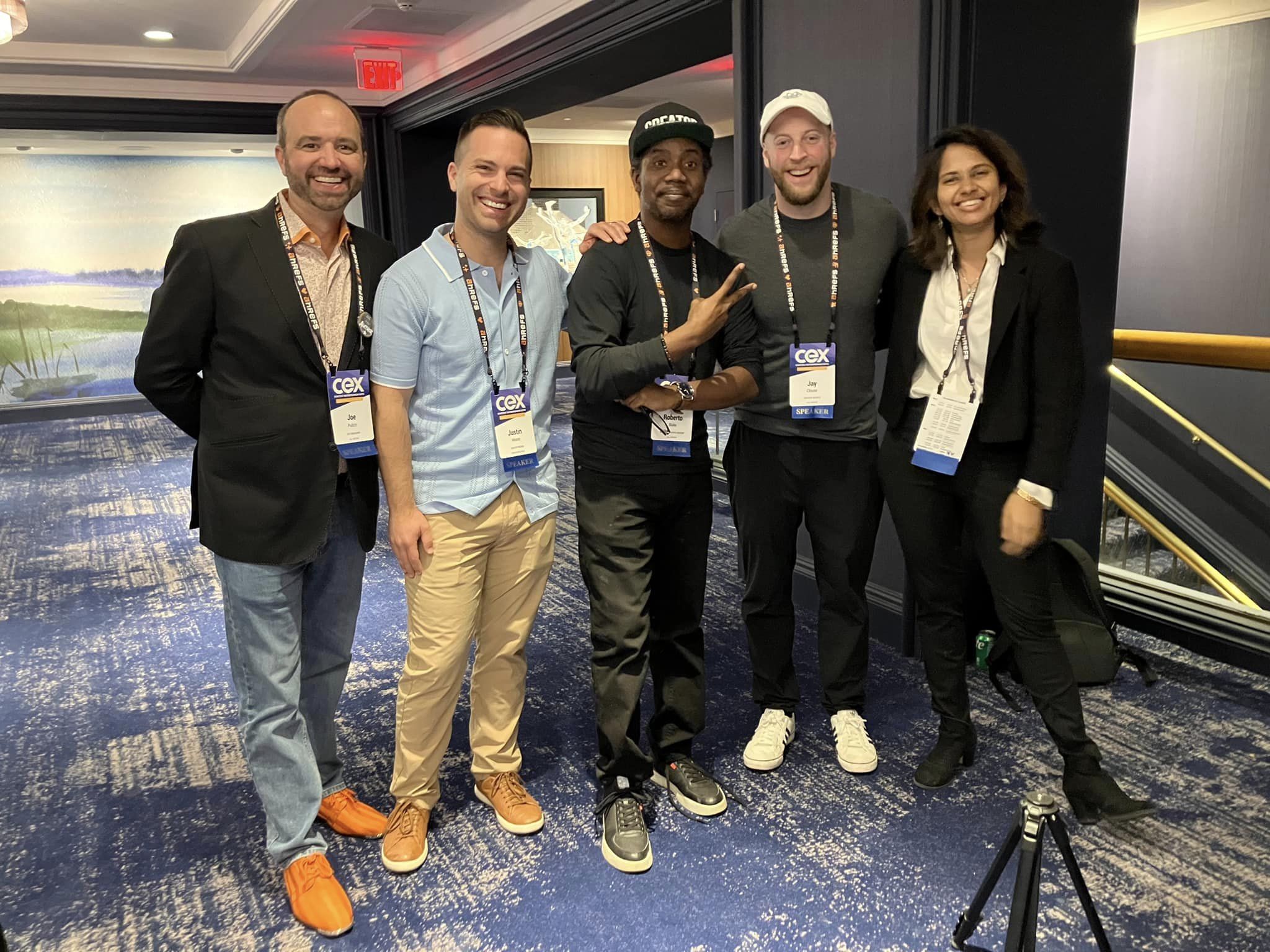Wow, what a week it’s been.
Thank you to all the wonderful creators at the Content Entrepreneur Expo (CEX). From the formal presenters to the informal conversations, you shared amazing inspiration and wonderfully practical tips.
So this Friday, I pulled five ideas from five Content Entrepreneur Expo presenters you can do right now.
1. Engineer accountability: Being a content entrepreneur often means you’re a one-person operation. Without a boss or client, you may find it difficult to set (and meet) internal deadlines and deliver your content products on time and of high quality.
Soundarya Balasubramani, author of Unshackled, says creators should engineer public accountability. She talked about how a crowdfunding campaign on Kickstarter created that for her. But you can do it in several public ways, such as promoting the frequency of your new content (newsletter, podcast, video, etc.) and putting dates on a calendar for your course releases and events.
2. Prepare for inspiration: On the CEX stage, writer, actor, and best-selling author B.J. Novak pulled out a small notebook from inside his jacket. He carries it with him everywhere and jots down things he sees and observes as he goes about life. But B.J. doesn’t just pull out the notebook when he’s ready to write. Every few weeks, he moves the observations and thoughts from his notebook to his computer. There, he groups similar ideas and themes. And that’s what he uses whenever he’s ready to create.
Buy a notebook and pen (and make sure you have a pocket or bag to carry it in.) Or figure out the best app or note-recording method on your phone. Just don’t stop there. Make a plan to download and refine it for future use.
(Shoutout to CEX attendee Zane Gibbs for sharing this tip.)
3. ChatGPT it: Andrew Davis, bestselling author and keynote speaker, had the audience shouting in unison, “ChatGPT it.” Yes, the generative AI tool became a verb. But Andrew’s advice is even better: “Don’t just task ChatGPT; shape it.”
Generative AI tools can be wonderfully helpful, but you need to do the work to get them to that point. Andrew created a digital doppelganger (Drewdini) as a truly virtual assistant that he uses in his business. And he also discloses that virtual help was used to those who are the beneficiaries.
4. Flip your thinking: Don’t think about your monetization, think about how you will improve their capabilities, says Pam Slim, author, business coach, and co-founder of K’é Community Lab.
The “their” she’s talking about? Your audience. The Tilt talks a lot about audience-first models, but I really liked that framing. It’s a simple shift that should have big returns. When you keep your eye on how the audience will benefit, the revenue is more likely to come.
5. Center on the majority: Justin Moore, founder of Creator Wizard, says haters will always be around. Whether it’s a comment about a point in your content, your voice, your wardrobe, or something else, expect people to say negative things publicly.
But don’t let those haters sway you from your real audience – the silent majority. Most of your audience will never post a comment or reply to an email. They show their support for your content by opening the emails, downloading the podcast, subscribing to the video series, and purchasing the online courses.
Justin also had one more thought that echoes Pam’s in No. 4: See selling as serving. That shift can reduce selling anxiety. And frankly, that’s the benefit of knowledge-focused businesses: You impart educational information to help your audience.
About the author
Ann regularly combines words and strategy for B2B, B2C, and nonprofits, continuing to live up to her high school nickname, Editor Ann. An IABC Communicator of the Year and founder of G Force Communication, Ann coaches and trains professionals in all things content. Connect with her on LinkedIn and Twitter.





![NFTs Hold Big Potential for Entrepreneurs Who Use Them as Never-Ending Tickets [Example]](https://www.thetilt.com/wp-content/uploads/2022/05/nfts-never-ending-tickets-1-440x264.jpeg)




